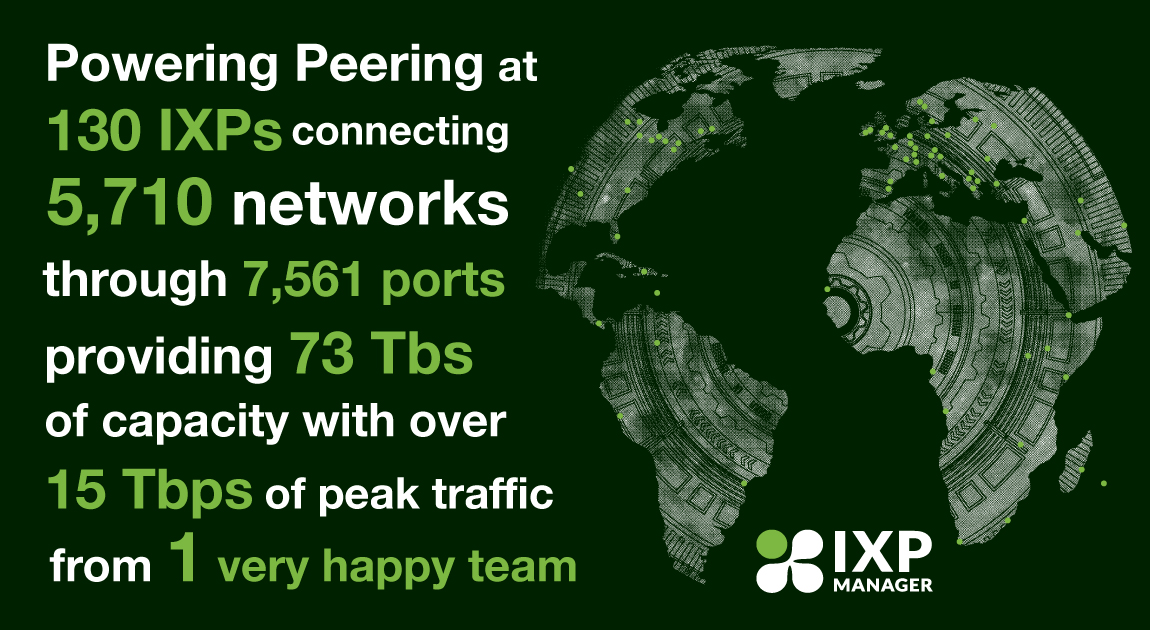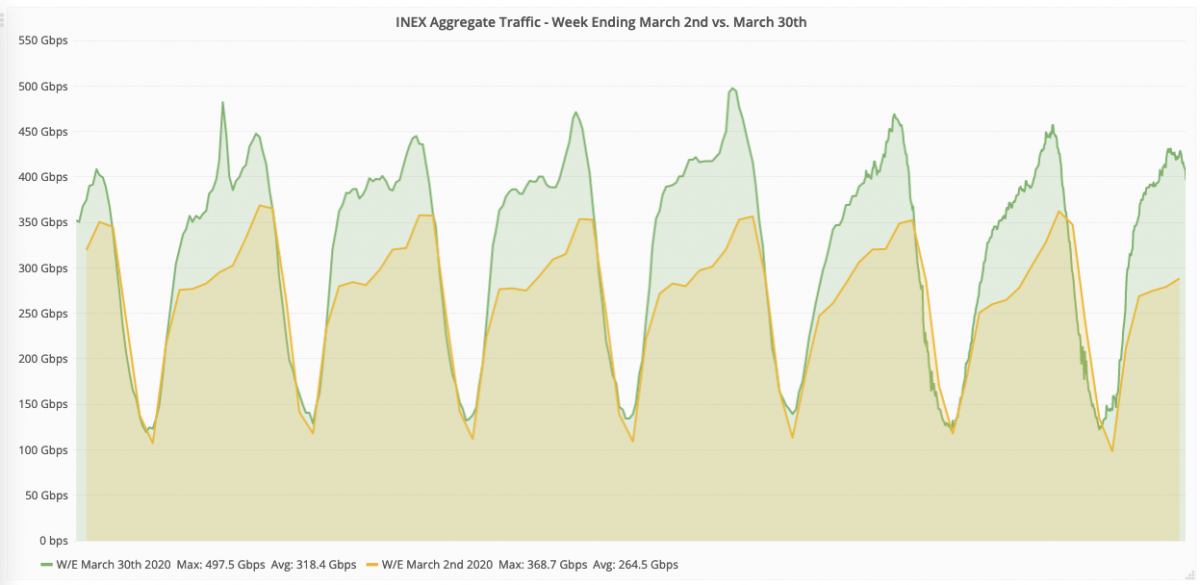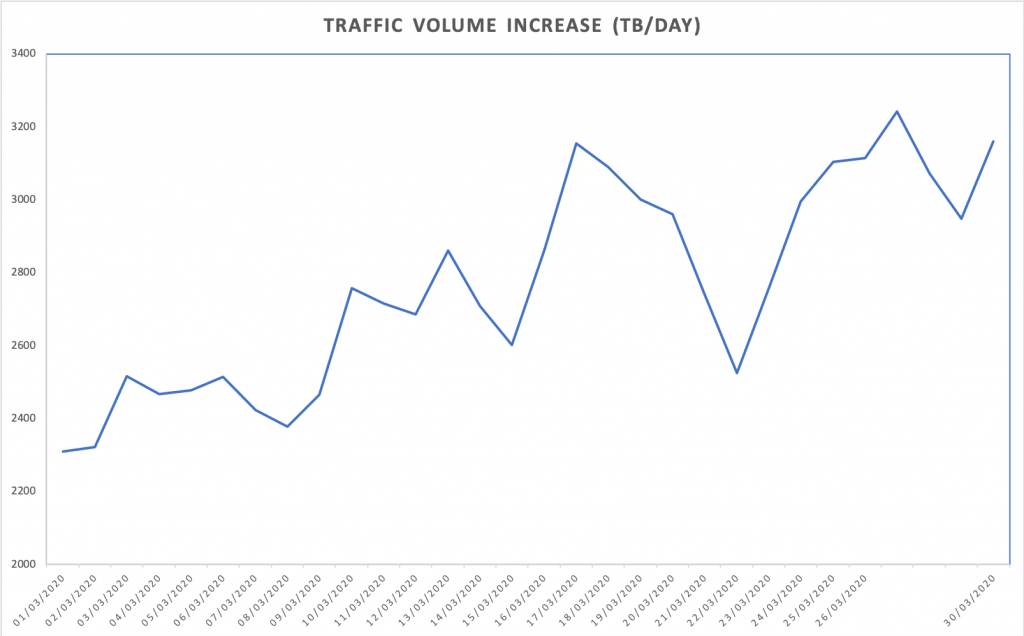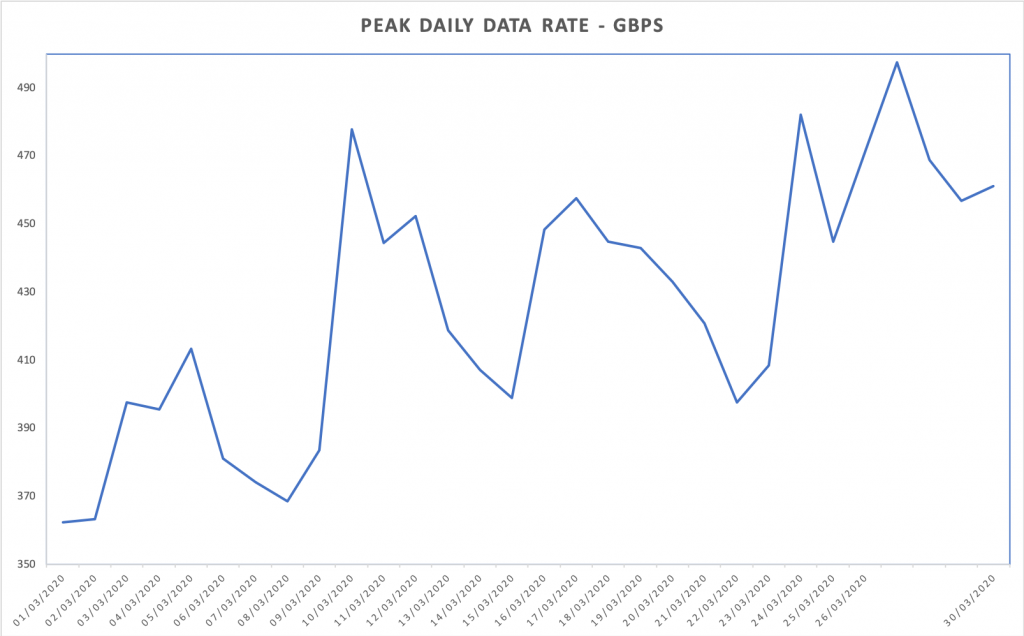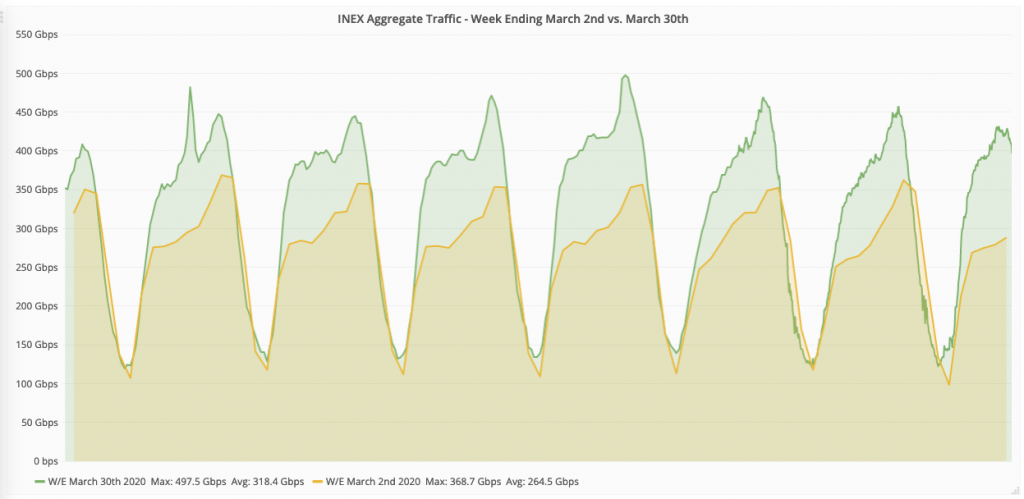I was delighted to help celebrate Euro-IX’s 20th anniversary today by giving a talk on Our Community and IXP Manager. My goal was to show that cooperation is a two-way street with IXP Manager by taking a look at how our community has helped the project and reflect on how the project helps our community. The event was of course online and you can find full details here: Euro-IX – 20 Years of Cooperation.
Euro-IX is my favourite event in our industry and I attended my first one on behalf of INEX when it was in Rome in 2009, accompanying the late Barry Rhodes. Since then, I’ve attended at least one of the two every year.
You can download the slides for the talk here which would be useful to follow some of the content below. There is also a video available here.
IXP Manager: Project Status
I began with a brief update on the current status of the IXP Manager project. An image I and the team at INEX take great pride in sharing is the following world view with 166 green dots – each dot representing an IXP that uses IXP Manager.

We, INEX and the IXP Manager project, launched a new website in June 2020. This site has a database backend that stores the 166 IXPs noted above and generates the above image dynamically. On a nightly basis, it also polls these IXPs in one of two ways:
- If the IX-F Member Export is enabled and publically available, we will pull the current data from this. This is the case for 98 of the 166 and this data is real-time and accurate.
- For the rest, we’ll use PeeringDB which requires networks (members of IXPs) to assert that they peer at an exchange and so these numbers will be a significant undercount.
The resulting stats, as of 27th June 2021, were presented next:
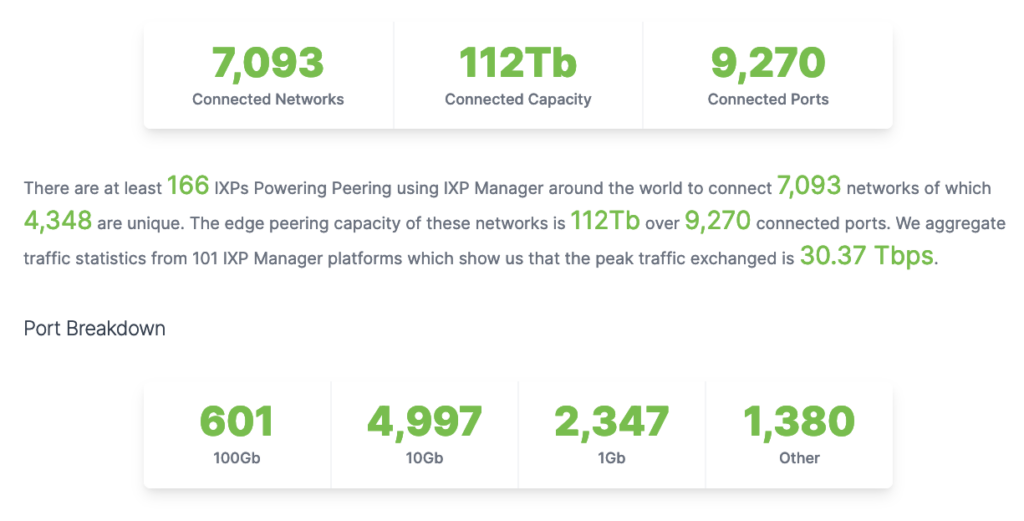
You can always find a live and current version of these here.
Our Community – Giving to IXP Manager
Now we’re getting into the meat of the presentation by looking at some of the things that the Euro-IX – and wider – community give IXP Manager. The first tangible item is community contributions which mostly cover the costs of a full-time developer. This program is currently in its fifth year. Rather than repeating what I said, please see this page on the website for details.
The next slide was about knowledge. This is possibly an under-discussed and under-valued aspect of Euro-IX in general. Knowledge is a very valuable commodity in most industries that is aggressively protected with NDAs, patents, and contracts. Yet, at Euro-IX forums, the operators of IXPs come together to learn; to create knowledge; and to share knowledge – openly and freely. The best of this community knowledge gets distilled into IXP Manager which, as we always say, teaches and implements best practices – and these practices have in part come from this creation and sharing.
One of the things I’m most proud of in our new IXP Manager website is the contributor wall of fame. Anyone who makes at least five contributions to the project through the GitHub platform will appear here which, as of today’s date, has just over 40 people. Any of the following will count towards a contribution:
- Possibly the hardest: contribute code through a pull request.
- Open an issue (bug report or feature request).
- Simply comment on an existing issue (or your own!).
- Contribute editorial fixes/content to the documentation.
This section was rounded out with a shortlist of other sources of community collaboration. The first was the coffee breaks between sessions and the conversations over drinks at the socials at Euro-IX forums. These relaxed environments allowed for more long-form free-flowing discussions with IXP Manager users to help flesh out potential features and to understand where the problems, grit, and rough edges exist. The information learned from these conversations then feeds into later versions of IXP Manager. I miss these face-to-face engagements and, hopefully, we can get back to them soon.
Finally, I wanted to give a specific mention to the open-source community in general. Before I was ever involved in IXPs, INEX, or IXP Manager, I had (and continue to have) an involvement in other open-source projects. For IXP Manager, the FOSS community has given us wide-ranging tools from the PHP language itself to Laravel – the web application framework we use, and right through to front-end libraries such as TailwindCSS and jQuery.
Of course, when we mention open-source in the IXP community, we have to give a nod to Bird, the internet routing daemon, which is the powerhouse of so many of our route server implementations. Hopefully, we’ll also find the time in 2021 to add OpenBGPd support to IXP Manager.
IXP Manager – Giving to Our Community
The is the other side of the two-way street and I wanted to touch on some of the things we hope IXP Manager gives our community. This isn’t about new releases, or functionality or features. And it’s not about being boastful or giving ourselves a pat on the back. It’s aspirational – it’s about what we think – what we hope – IXP Manager gives the community. It’s also not something we can claim success for – it’s up to the community to decide if we’ve succeeded here.
This first element of this was our mission statement – our vision / hope for the project and why we open-sourced it:
Our vision for IXP Manager and the basis for making it a free-to-use, open-source project was that it might enable the creation of IXPs where they are required.
The existence of these IXPs would, in turn, create a stronger, open, more robust and better-connected internet.
This very much goes back to the kind of people involved in IXPs. For most of us, the notion of for the good of the internet is part of our DNA.
The next thing I hope IXP Manager gives the exchanges that use it is independence. The independence to build a local community and form the best and most appropriate community-led IXP for the region in which it exists. This is also an anti-colonialism / anti-imperialism measure as we’ve seen a number of the larger IXPs establish IXPs well outside their original countries and regions. To my mind, in most cases, this is not the best way to build IXPs and usually leads to transactional IXPs rather than communities.
I also like to think of IXPs as facilitators – if not even guardians to an extent – of net neutrality. When you have for-profit IXPs then the business motive is wealth creation. That is the very definition of for-profit. When this is your motivation then the decisions you make may not necessarily be to the benefit of all your members – especially the weaker / smaller members.
Something I’m fairly satisfied that IXP Manager does give new IXPs is the best possible start. As well as a good leg-up for smaller IXPs that move to the platform. The concepts of secure by design and best current practices are baked into what IXP Manager does. Of course, an IXP will always need staff with network engineering and system admin skills – but we hope that the steep learning curve is very much flattened by the use of IXP Manager. To the extent that the challenges in starting a new IXP should no longer be technical but rather environmental: regional political and regulatory issues, commercial issues such as funding and data centre contracts, and finding members.
Finally, we hope IXP Manager gives new IXPs credibility. The reason (so they’ve told us) that Facebook, Amazon AWS and Netflix (historically) have supported IXP Manager through patronage is that they see the value in coming to a new exchange that has installed and is making good use of IXP Manager. These content networks know that much of the technical elements will be “done right”.
There’s also a reverse angle to this – reputation protection for the rest of us. There are only a few hundred active IXPs worldwide and we’ve all worked really hard to build confidence in our abilities – most as community-led not-for-profit enterprises – to deliver secure, reliable services. It only takes a small few bad actors (such as cowboys looking for a quick profit or inexperienced operators) to sow the seeds of doubt. I hope IXP Manager helps put a large insurance blanket over the rest of us by helping these new IXPs start out in the best possible way.
Epilogue
Our Euro-IX community not only supports IXP Manager. We all support each other – through the forums, mailing lists and virtual meet-ups. That we are all so willing to share information and experiences so openly is the wonderful thing about Euro-IX. Not just an association but a community. It’s a community I’m proud to be a part of and call so many of its members by friends. Here’s to the next 20 years!

